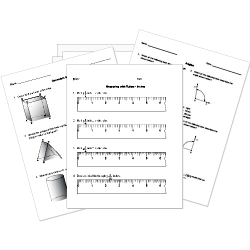Liquids
Liquids
This lesson aligns with Next Generation Science Standards (NGSS) PS1.A
INTRODUCTION
Everything in this universe is made up of some material which occupies space and has a specific volume called “matter”. The matter is composed of tiny particles, i.e. atoms. Your clothes, your chair, your pen, anything that takes some space is an example of matter. The matter has been further divided into some fundamental states such as solids, liquids, and gases. Water is a basic necessity for our lives and has unique characteristics to represent all these states of matter. Water is the most common example of a liquid on earth as well.
Liquids have neither the completely ordered structure of a solid crystal nor the complete randomness of an ideal gas. Therefore, the structure of liquids is intermediate between solids and gases. A liquid is the only state of matter that retains its definite volume but no fixed shape. In this article, we will talk about liquids, the properties of liquids and the factors influencing these properties.
LIQUIDS
A liquid is a nearly incompressible fluid, like gas, that conforms to the shape of a container in which it is poured but keeps its volume nearly constant. Liquids are made up of tiny vibrating particles of matter such as atoms, molecules and ions. The vibrating particles of a liquid are packed together by intermolecular attractive forces. These attractive forces are not strong enough, however, to keep neighboring molecules in a fixed position. In liquids, the molecules are free to move about, but still have some order because they remain relatively close to each other. Liquids have higher kinetic energy as compared to solids because of constantly moving particles.
PROPERTIES OF LIQUIDS
The properties of liquids that are particularly important are surface tension, viscosity and density.
Surface tension
Liquids can flow when not in a container. There is a force of attraction among the molecules of liquids that keeps them stuck together firmly. The surface tension arises due to the cohesive forces between the molecules of the liquid. Below the surface of the liquid, the force of cohesion between molecules is the same in all directions. Molecules on the surface of the liquid, however, feel an inward attractive force that pulls them back into the body of the liquid. As a result, the liquid attempts to take on the shape that has the smallest possible surface area. Surface tension can be defined as the magnitude of the force that controls the shape of the liquid. The stronger the bonds between the molecules of the liquid, the higher the surface tension.
Viscosity
It is a measure of fluid’s resistance to flow. Basically, it describes the internal friction of fluids. Liquids with large viscosity resist moving because their molecules produce a lot of internal friction, e.g. honey is more viscous than other fluids. Similarly, liquids with low viscosity produce less internal friction and can easily move, e.g. water.
Density
The density of a liquid is typically the same as the density of the solid state of the substance, but it is denser than gases.
Compressibility
Liquids are nearly incompressible. The molecules of the liquids do not have much space between them, which is why they cannot be squeezed closer.
Shape and volume
Liquids have the ability to retain their volume but not their shapes. If you take 100 ml of water, and pour water into a glass, it will take the shape of the glass. Now pour the liquid from the glass into a small container, the liquid will change its shape and take the shape of the container.
FACTORS THAT INFLUENCE LIQUIDS
The following are the factors that affect the characteristics of liquids.
Temperature effects
When temperature increases, the vibrations of the molecules also increase, which increases the distance between the adjacent particles. When a liquid achieves its “boiling point”, these cohesive forces that keep the molecules of liquid together break. Consequently, the liquid turns into a gaseous state. Similarly, if the temperature decreases, the distance between the molecules of liquid also decreases. When a particular liquid reaches its “freezing point”, its molecules arrange in a specific order “called crystallization”. The bonds between them become stronger, turning liquid into a solid state of matter.
Pressure effects
When pressure changes, it causes very little effect on the volume of a liquid. Liquid is relatively incompressible because any increase in pressure can only slightly reduce the distance between the packed molecules. The attractive forces become strong enough to change liquid into a solid state. When the pressure is decreased, the distance between the adjacent molecules increases. Continuously decreasing the pressure breaks the bond among the molecules of the liquid, changing it into a gaseous state.
SUMMARY
- Liquids are fluids that can take up the shape of the container but retain their volume.
- In liquids, molecules are held together by intermolecular attractive forces. Still, these molecules are constantly in motion. Therefore, liquids have higher kinetic energy.
- Liquids can change into other states of matter as temperature and pressure change.
Related Worksheets:













